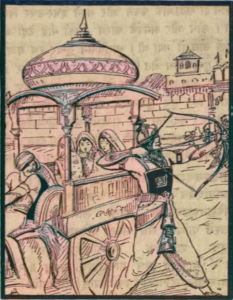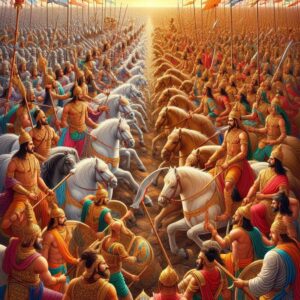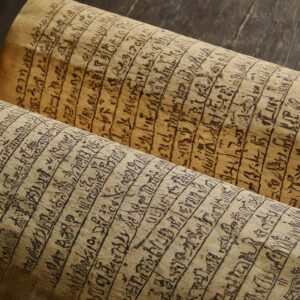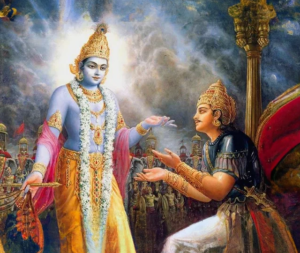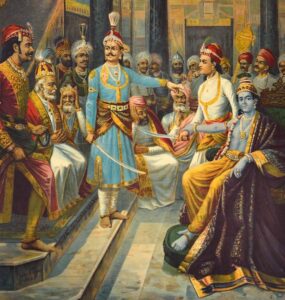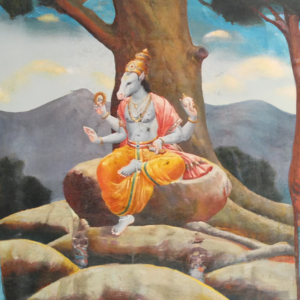Jambu Dvipa Parva or Jambu Khanda Vinirmana Parva is the sixty first Upa parva included in the sixth Maha parva named as Bhishma Parva. Vaishampayana continued narration to Janamejaya in reply to his queries. Janamejaya was very curious about the happenings in the war. He asked Vaishampayana how Kaurava and Pandava army soldiers had faced the battle.
The India sub-continent then called as Bharata Varsha or Jambu peninsular was the main area from where the kings and soldiers came marching and they had formed tents on the Western side of Kurukshetra facing the East. Yudhishtira had ordered to arrange several thousands of army camps. Duryodhana had also arranged several thousands of army camps on the Eastern side outside his palace facing the West.
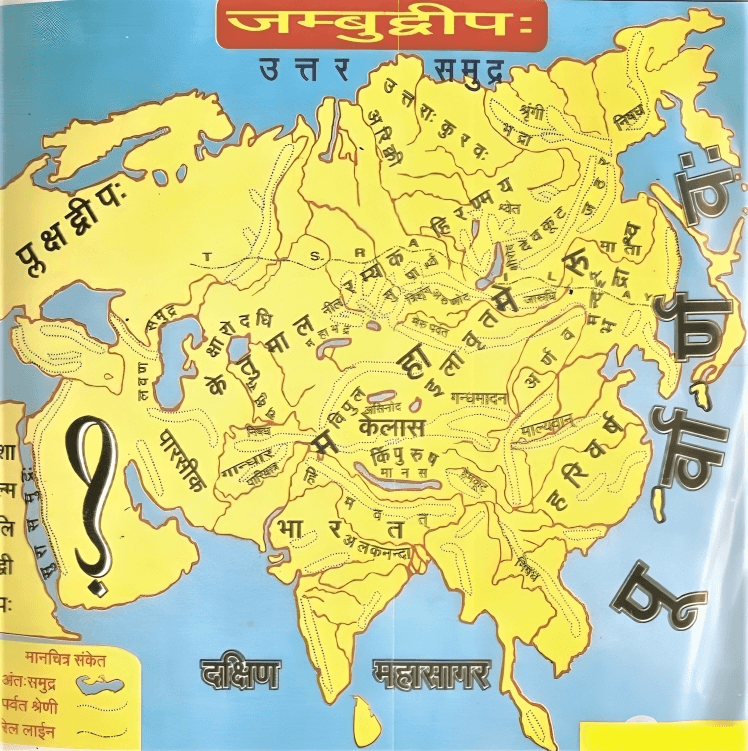
Yudhishtira had distributed code words to soldiers to recognize them in the field. He also arranged sufficient food and essential items for all his warriors. Duryodhana had distributed jewels to his own soldiers to recognize them in the field. He also arranged for all, sufficient dress and other essential items. He encouraged them to fight and instructed to kill the Pandavas. Pandavas’ side and Kauravas’ side commanders formed their own terms and conditions for avoiding killing of own side soldiers due to mistaken identities.
Vyasa Rishi visited there. Vyasa was a far sighted Rishi. He visited Dritarashtra and secretly informed him about the military developments in Kurukshetra. He also informed about the bad omens and guessed about the bad results of war near his palace. Vyasa offered Dritarashtra to provide him visual ability to see the war proceedings of his children. Dritarashtra replied to Vyasa not to offer him the power of vision since the war would happen between the children grown up by him in his own palace. But as an emperor he should collect the daily news related to his palace and surroundings.
Continue reading
